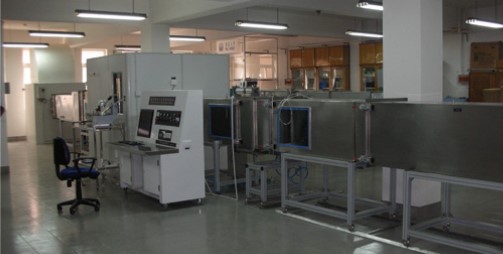
NewsInformation Center
What are the safety tests for food packaging materials?
2021/11/02
Food packaging is of great significance to food. It can provide protection, reduce or prevent food from being affected by external microorganisms or other substances, and prevent food from chemical reactions. Because food packaging materials are in direct contact with food, many of them will have a direct impact on food. If the human body uses unsafe packaging materials for a long time, it may cause harm to the human body. Therefore, people must pay attention to the safety of food packaging materials.
Common food packaging materials
1. Plastic product packaging
The basic component of plastic is high molecular polymer resin. In order to improve the performance of plastics, various additives will be added. As food packaging materials, plastic products have low cost and strong plasticity, which can meet the requirements of various packaging materials. Many food processing industries will choose it as a food packaging material. However, some substances in plastic packaging materials can contaminate food and affect food safety. It is worth noting that there are two aspects to the popular recycled plastics in recent years. On the one hand, it reduces the waste of resources. On the other hand, because the recycling process and methods are difficult to control, it will also lead to the residue of some toxic substances and contaminate food.
2. Paper products packaging
The raw materials of food packaging paper are mainly straw pulp and wood pulp. Due to the source, pesticide residues are sometimes unavoidable. If it is not processed further, it may contaminate the food. Problems may also occur in the waste paper recycling process. Most technologies can only remove ink and paint, but not harmful substances. Or recycling moldy paper, mold may also remain in the paper packaging. In addition, the substances added in the paper packaging may also bring harmful substances. Some manufacturers add fluorescent or whitening agents in pursuit of beauty, which is carcinogenic. A common contamination is ink contamination. Due to the lack of attention to food packaging issues, there is currently no ink for food packaging on the market. The commonly used inks are organic solvent gravure inks, which contain toluene and xylene. This ink needs to be diluted in food packaging, and the diluted solvent contains benzene. The residue of this kind of solvent in the food packaging exceeds the standard, and it will also cause pollution to the food. The pigments and dyes used in the ink contain heavy metals such as lead and cadmium, which may cause heavy metal pollution in food.
3. Metal products packaging
Metal materials are widely used in food packaging and have many advantages. Various metal containers made of metal materials can better block the influence of the outside world on the food and ensure the freshness of the food. In addition, metal materials are also convenient for multiple recycling. However, metal packaging also has obvious disadvantages. Due to poor chemical stability, metal substances are prone to react under the influence of external factors. High-acid and alkaline foods cannot be packaged in metal. Iron containers, aluminum food packaging and stainless steel food packaging are common metal food packaging. However, these packaging will cause different safety hazards. If people eat aluminum-packaged foods for a long time, metals such as lead and zinc will accumulate in the body, causing chronic poisoning. Stainless steel food packaging contains a large amount of nickel, which will volatilize unstable substances in the food at high temperatures, and even cause carcinogens, which is extremely harmful to human health.
Many food packaging materials contain less harmful substances, so it is difficult to detect them. The current detection method is to use the immersion method to extract harmful substances in food and to detect the sampling liquid, but this method is not sensitive and is not conducive to quantitative analysis. In addition to technical difficulties, some new packaging material contaminants have emerged in recent years. Currently, there is no standard detection method. In the detection process, due to the limitation of detection methods, means and environment, the detection results will also be disturbed. In view of the deficiencies of the testing system, efforts should be made to improve the testing technology, standardize the testing process, and establish a complete food packaging testing system.
Food safety is closely related to people's daily life and is a very important issue. In order to ensure food safety, safety testing of food packaging materials is also very important. It is necessary to fully understand the problem and continuously improve the detection system. For more related information, please pay attention to Standard Group and leave us a message: http://www.standard-groups.com/en/
Previous: Xenon Arc Weatherometer evaluates the influence of light on dyes
N e x t : The mechanism of textile tearing




